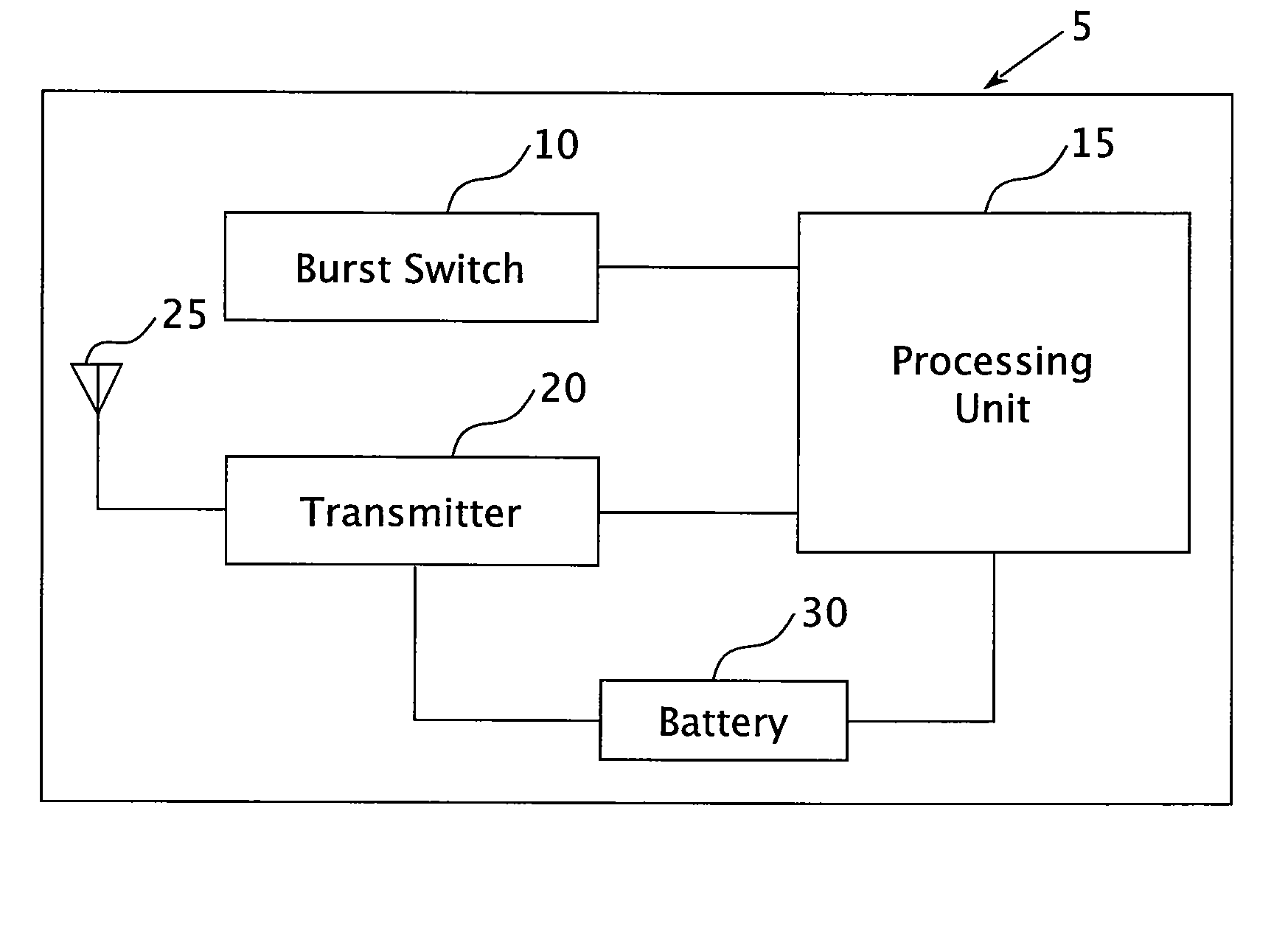Methods and apparatus for switching a transponder to an active state, and asset management systems employing same
a transponder and active state technology, applied in the field of transponders, can solve the problems of all the electronic components of the rfid tag in the system being awakened, and achieve the effects of reducing total energy consumption, extending battery life or other charge storage device life, and eliminating shelf maintenance on the active rfid tag
- Summary
- Abstract
- Description
- Claims
- Application Information
AI Technical Summary
Benefits of technology
Problems solved by technology
Method used
Image
Examples
Embodiment Construction
[0034]FIG. 1 is a block diagram of an RF transponder 5 according to one embodiment of the present invention. The RF transponder 5 includes a burst switch 10, which is described in more detail in connection with FIG. 2. The burst switch 10 is in electronic communication with a processing unit 15, which may be, without limitation, a microprocessor, a microcontroller, or some other type of processor device. The processing unit 15 may further be another type of electronic device, such as a CMOS device or any other electronic circuit element provided on, for example, a semiconductor substrate or printed circuit board (PCB), which performs a particular function or functions. The processing unit 15 is capable of being placed into an inactive, sleep state where the current drawn by it is at a minimum. In addition, the processing unit 15 may be woken up, i.e., moved from the inactive, sleep state to an active state, upon receipt of an external input signal. An RF transmitter 20 is in electro...
PUM
 Login to View More
Login to View More Abstract
Description
Claims
Application Information
 Login to View More
Login to View More - R&D
- Intellectual Property
- Life Sciences
- Materials
- Tech Scout
- Unparalleled Data Quality
- Higher Quality Content
- 60% Fewer Hallucinations
Browse by: Latest US Patents, China's latest patents, Technical Efficacy Thesaurus, Application Domain, Technology Topic, Popular Technical Reports.
© 2025 PatSnap. All rights reserved.Legal|Privacy policy|Modern Slavery Act Transparency Statement|Sitemap|About US| Contact US: help@patsnap.com



